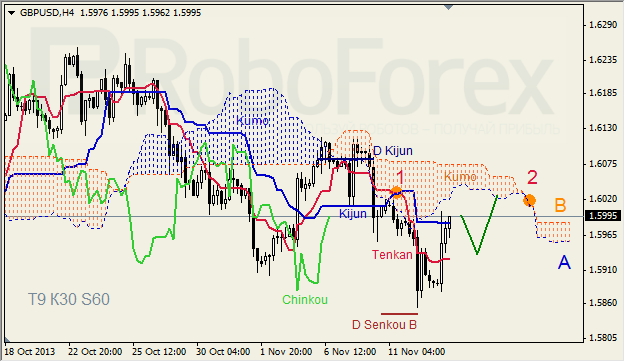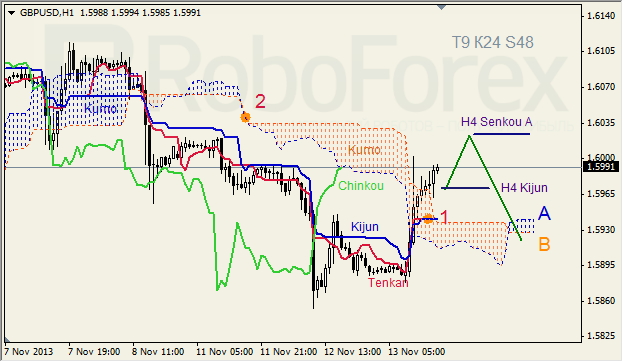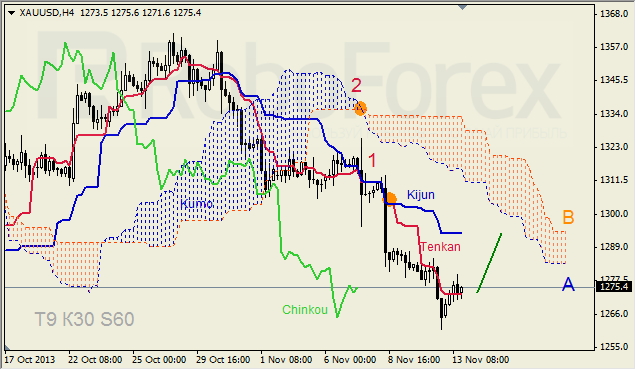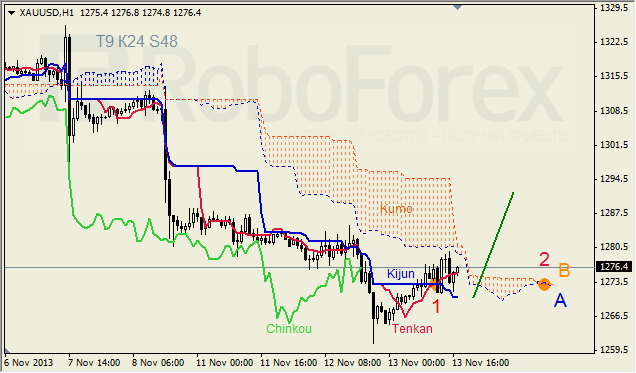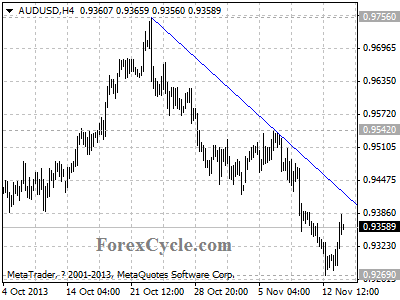Source: JT Long of The Gold Report (11/13/13)
http://www.theaureport.com/pub/na/comstock-mining-ceo-goal-of-doubling-production-in-2014-just-a-first-step
Comstock Mining Inc. is set to double its gold production to 40,000 oz in 2014 and may soon be able to boost production nearly fourfold. In this interview with The Gold Report, Comstock Mining CEO Corrado De Gasperis explains why the company’s sizeable resource potential, successful permitting achievements, low-cost drilling program and cultural commitment to safety and environmental responsibility are just a few of the reasons why investors should be following this attractive gold producer.
MANAGEMENT Q&A: VIEW FROM THE TOP
MANAGEMENT Q&A: VIEW FROM THE TO
The Gold Report: Corrado, considering the macro picture for precious metals, tell us where you think gold and silver prices are going and why.
Corrado De Gasperis: It’s hard for me to see gold staying below the $1,200/ounce ($1,200/oz) level for any sustained period. The all-in sustained costs for this industry are higher than many people understand, and getting higher due to lower grade, higher regulation, more difficulty to extract resources and some very high-risk jurisdictions, so we’re fortunate to have near-surface, higher-grade deposits in Nevada that enable the possibility for such low operational costs.
Ultimately, the fundamentals suggest strongly that the gold price must go up. The timing is impossible for me to predict, even with crystal balls, but the current psychology suggests near-term volatility, with an intermediate and longer-term gold price trend line being up, possibly surging up, as the markets realize the depth of the crisis in our monetary policies.
TGR: On Oct. 29, Nevada amended a water pollution control permit to allowComstock Mining Inc. (LODE:NYSE.MKT) to increase mineral material processing to 4 million tons (4 Mt) from 1 Mt. How much of an impact will that have and how quickly can you ramp up production?
CDG: Our newly modified water permit enables the full expansion of our heap leach this month, which allows us to ramp up production in the late-November, early-December timeframe. We’re looking to double our production as soon as that expansion is completed this quarter. The process will allow us to significantly drop our unit cost, increase our revenue and most importantly, generate sustained, positive cash flow.
TGR: Is that part of your cost cutting? What other cost cutting measures are you doing to increase the margins?
CDG: It’s a bit more like leveraging the existing cost structure for maximum throughput. Up until now, the priority has been ramping up and stabilizing the system. We’re doing many other things to achieve cost management and further efficiencies. For example, we’re looking very closely at the logistics of the mine operation to minimize wear and tear on our vehicles and shorten the cycle time and energy used for hauling. We’re also working to streamline our projects and enhance the way that we maintain our equipment. There’s a tremendous focus now on efficiency.
TGR: What would the eventual all-in cost per ounce be?
CDG: We’ve guided toward dropping our cost to about $750/oz. That will come from ramping up production and leveraging the fixed-cost base with this new permit and heap-leach expansion. As we continue to work on the efficiency of the system, we expect that it could even fall below $700/oz. What is remarkable about that performance is that we are still producing from our relative lower-grade range.
TGR: In the first two quarters, you reported some bottlenecks that hurt production. Was that linked to the heap-leach operation?
CDG: Actually, it was a little further downstream from there. Our Merrill Crowe facility was the one aspect of our system that wasn’t fully upgraded, meaning we were utilizing lower capacity facility. When we ramped up production, we identified a number of previously misunderstood physical constraints, including, for example, some undersized piping and even some equipment that was much less reliable than initially assessed. We invested a little over $1 million ($1M) in those various individual constraints. We debottlenecked them physically and upgraded the facilities and the equipment. Most all of our system was newly designed, including our crushing facilities. Since then, the whole system has been running extremely well.
TGR: Can you give us a progress update on the east side of Lucerne where the bulk of identified resources is located? What are some realistic targets for getting local, state and federal permits and what drilling is planned for the near future?
CDG: The east side of Lucerne is exceptionally exciting. We’ve hit on over a dozen drill holes with greater than a 1-ounce per ton assayed gold, with our highest grade hit being over 3.5 ounces per ton of assayed gold. We’ve also validated a concentrated structure that is 150 feet by 400 feet of high-grade ore that we’re calling the Chute Zone, which is a concentration of minerals greater than one of the historic bonanzas, the Woodville bonanza, located just about a thousand feet north of the Chute Zone. What is remarkable here is that we feel we are just scratching the surface of the discovery, as it remains wide open on almost all sides and at depth.
To address your second question, we already have most all of our state permits in place, as well as local permits for the west side. Expanding our local permits to the east in 2014 will be the next step for developing the east side. From a federal permit perspective, we’re in the preplanning stage for a larger districtwide objective, which really goes beyond expanding to the east. That districtwide plan should include an expanded heap-leach pad and the possibility of a mill, and the plans should come together midway through next year.
The vast majority of our validated resource is in the center and east of the Lucerne mine. The physical area is very large so that we still have meaningful exploration objectives there. We’re even looking to go deeper into, and past, the Chute Zone because, as previously mentioned, that resource seems to be open on all sides. We’ve identified about a $6M drill program for the next phase, although every time we’ve drilled Lucerne, so far, our discoveries have exceeded expectation. Increasing the scope of the drilling just increases the project’s potential.
TGR: Moving toward production in that area, what is the capital expenditure (capex) and timing and what form could that take? Are we talking about open pit or underground?
CDG: From a capital expenditure perspective, one of the best parts of our story is that we built a facility that could handle in excess of 4 Mt per year. The recent water modification helps align our permits to that level and we don’t really need many more capital purchases to increase production.
As for mine development, there is some infrastructure modification that would be justified. We can expand our haul road for increased production and may need a few more haul trucks moving forward. The Merrill Crowe upgrades are already up and running. As part of our districtwide plan, we will begin to drill deeper underground to get to those higher grades, so we’re undergoing various feasibility assessments that we expect will support, in an exciting way, a mill. We expect those assessments, as part of the overall district planning, to be completed by the middle of next year.
All of our current mining and the proposed expansion are on the Lucerne. It is all oxide ores and highly leachable. We expect to need a modestly sized mill to complement the $3M heap-leach investment and that would give us a dual platform to process our lower-grade oxide ores through the heap leach and higher-grade oxide ores, potentially sulfide ores, through the mill.
TGR: How about an update on the west side? What permitting are you doing there and what drilling?
CDG: The west side is positively impacted by the new water control permit because it’s allowed us to ramp-up production. Most of the drilling that we’re doing in the west side is for blasting and mining activities and, to some degree, expanding of the boundaries to the north. We are waiting for a right-of-way permit that is in its later stages with the Bureau of Land Management to expand the haul road, which will also help us optimize the logistics of mining on the west side. We are not in need of any other permits for the west side.
TGR: What are the production plans on that side?
CDG: Our current permits will allow us to go from producing 20,000 oz (20 Koz) gold equivalent this year to producing over 40 Koz gold equivalent next year, though that’s just an intermediate step because we’re permitted to do more than those levels. The increase is pretty meaningful because 40 Koz gold equivalent is about 35,000 oz of gold and about 350 Koz of silver.
That’s an important step for next year, because it is profitable for us. Ultimately Lucerne should be able to do at least 75–80 Koz gold equivalent. That’s consistent with our current grade profile and operating closer to the 4 Mt per year operation that the water control permit now authorizes, but if the grade profile continues to improve to the east, we could achieve 90–100 Koz per annum from that rate of throughput.
Even at the low end of those ranges, 75 Koz per year, we’re really talking about the possibility of 150 Koz per year, if we could replicate that production from our second possible mine, the Dayton mine. Dayton is in a different county and we have really just started the pre-permitting activities there, but from our initial drilling and metallurgical results, all of which are published, the possibilities look very good.
TGR: Can you give us an update on progress at Dayton?
CDG: Dayton has a current, published resource of about 500 Koz gold equivalent. Our last drill program hit significant mineralization on 63 out of 64 holes and included meaningfully higher grades. We have a $4M second-phase drilling program that we believe would sufficiently develop mine plan scenarios and give us most of the prerequisite information to apply for a mining permit.
Our land position in the district contains about six miles of contiguous mineralized trend that we validated through a geological structural control from top to bottom. There are really seven major target areas, with the Lucerne being the centerpiece and Dayton just south of it. We also have the Spring Valley project, south still of the Dayton; the Oest, sandwiched in between Lucerne and Dayton; the Occidental; and two additional targets, all to the north of Lucerne, that are all really exciting from a high-grade and a concentrated resource perspective.
Our business plan is driving us to develop Lucerne and Dayton first, but we’re just as eager to get to Spring Valley and the other five targets.
TGR: You were previously at Barzel Industries Inc. and GrafTech International Ltd. What impact does your background and the experience of the rest of your management team and the workforce in Nevada have on Comstock’s prospects?
CDG: I believe our diverse industrial experiences complement each other wonderfully. I personally have over 25 years of heavy industrial manufacturing experience tied almost solely to metals and mining. I believe I bring a very objective, systems-based management approach to the organization. As a system, or an interdependent team, if you will, we put a lot of emphasis on planning and scheduling, and we have worked very hard to put a quality system in place. We’re always looking to improve and grow.
Doing things in a coordinated way, in a quality way, ultimately inspires a culture of continuous improvement. The ability to challenge assumptions openly creates not just a productive and effective environment, but a learning environment. If people have mutual respect as a team and feel they can truly learn from each other, you then have something special.
TGR: Your vice president of exploration and mine development, Larry Martin, has quite a bit of experience in Nevada. Does that help knowing the players?
CDG: Yes, it helps tremendously. There are many competent geologists, but there are few that have a history of repeated, substantial discovery. Larry has had more than a handful of projects that are meaningful discoveries, often in the areas where people doubted the existence of the metal. He has a very structural approach to the geology; he likes to understand the structure of the model before drilling. As a result, he’s had a tremendous hit rate and a tremendous expansion rate.
In Nevada, Larry knows the people across the industry, from exploration to production and, especially, on the supply side. He has strong personal interdependencies with the metallurgical laboratories, the most reputable drilling firms and has long established working relationships with the best engineering and assaying firms. This helps create a highly reliable extension of our enterprise, our system, if you will.
TGR: One of the top-listed members of your company’s management team is your director of safety, Randy Harris. Is that on purpose?
CDG: It’s definitely on purpose. Safety and environment are the strongest covenants that we establish within our system and, of course, the territory. If we didn’t approach every step we take, each transaction we make in a safe and environmentally conscious way, our business would not be sustainable.
Sustainability starts with the environment and safety and then, everything else follows from there. The most expensive operation is an unsafe one. Comstock Mining has no tolerance for harming the environment or endangering any of the people involved in our activities. Randy is a proud Nevadan and an industry leader in this regard, and, coincidentally, was raised in Silver City, on the Comstock!
TGR: You recently raised $8.7M in a public offering. How will you use these funds to move the company forward?
CDG: The primary target was to finish the expansion of the heap-leach pad, which cost about $3M, plus the working capital associated with that ramp-up. We also targeted some funds for expansion of our land position. We believe we have consolidated substantially all of the mineralized properties south of Virginia City on the Comstock Lode, but there are other extensions of land that will allow us to expand our production and processing capabilities. The capital was raised to enable and sustain growth. Since we raised that money, we’ve been tackling that project head-on.
TGR: Were most of the investors involved in the capital raise new or existing investors? Were they retail or institutional?
CDG: They were primarily institutional and existing investors, though we did benefit from some new institutional investor and high-net-worth investor interest as well. We’ve worked very hard over the last three or four years to build an exceptionally solid foundation of capital, which is reflected by some of our more well-known investors, including, for example, U.S. Global Investors and Sun Valley Master Gold. These investors are keen on Comstock Mining because of the existing, validated asset value and the great growth potential, both in cash flow and resources, that we can create over the intermediate and longer term.
TGR: When will you have to raise capital again?
CDG: We don’t have any plans to raise capital. This expansion drops our unit cost, grows our revenue and takes us into generating positive cash flow. Right now, we’re focused on generating that cash flow and growing production at a sustainable pace.
TGR: Your stock is trading around $1.86. It’s fluctuated between $2.80 on the high and $1.50 on the low. What are the catalysts that will take it to the next high?
CDG: Positive cash flow is certainly the single most immediate catalyst and that good news is right in front of us. Beyond that, our largest upside is our vast exploration potential. We will put our positive cash flow to work in expanding and developing an even bigger gold and silver resource and that would be the next, most exciting major catalyst. Today we have over 2.5 million ounces (2.5 Moz) of gold and almost 27 Moz of silver. Our resource averages about 10 ounces of silver for every ounce of validated gold.
We feel we are just getting started in a vast mineralized district, but I think those two things are probably the largest catalysts. The third will be really demonstrating our new districtwide plan and giving people a clear view of the premise that takes us not to 20 Koz a year, not to 40 Koz a year, not even to 60 or 80 Koz a year, but up to 150 Koz through production from two mines on the Comstock.
TGR: Thank you for your time.
Corrado De Gasperis has 25 years of manufacturing, metals and mining operational and financial management, project management and capital markets experience. He is currently the president, CEO and a director of Comstock Mining Inc., a gold and silver producing mining company that is protecting, preserving, enhancing and now producing on the historic Comstock Lode District in Nevada. Previously, he was CEO of Barzel Industries Inc. and before that CFO of GrafTech International Ltd., a global manufacturer of industrial graphite and carbon-based materials. He holds a BBA from the Ancell School of Business at Western Connecticut State University, with honors.
Want to read more Gold Report interviews like this? Sign up for our free e-newsletter, and you’ll learn when new articles have been published. To see a list of recent interviews with industry analysts and commentators, visit our Streetwise Interviews page.
DISCLOSURE:
1) JT Long conducted this interview for The Gold Report and provides services to The Gold Report as an employee. She or her family own shares of the following companies mentioned in this interview: None.
2) Comstock Mining paid The Gold Report to conduct, produce and distribute the interview.
3) Comstock Mining had final approval of the content and is wholly responsible for the validity of the statements. Opinions expressed are the opinions of Comstock Mining and not Streetwise Reports or The Gold Report or its officers.
4) The interview does not constitute investment advice. Each reader is encouraged to consult with his or her individual financial professional and any action a reader takes as a result of information presented here is his or her own responsibility. By opening this page, each reader accepts and agrees to Streetwise Reports’ terms of use and full legal disclaimer.
5) From time to time, Streetwise Reports LLC and its directors, officers, employees or members of their families, as well as persons interviewed for articles and interviews on the site, may have a long or short position in securities mentioned and may make purchases and/or sales of those securities in the open market or otherwise.
Streetwise – The Gold Report is Copyright © 2013 by Streetwise Reports LLC. All rights are reserved. Streetwise Reports LLC hereby grants an unrestricted license to use or disseminate this copyrighted material (i) only in whole (and always including this disclaimer), but (ii) never in part.
Streetwise Reports LLC does not guarantee the accuracy or thoroughness of the information reported.
Streetwise Reports LLC receives a fee from companies that are listed on the home page in the In This Issue section. Their sponsor pages may be considered advertising for the purposes of 18 U.S.C. 1734.
Participating companies provide the logos used in The Gold Report. These logos are trademarks and are the property of the individual companies.
101 Second St., Suite 110
Petaluma, CA 94952
Tel.: (707) 981-8999
Fax: (707) 981-8998
Email: [email protected]


